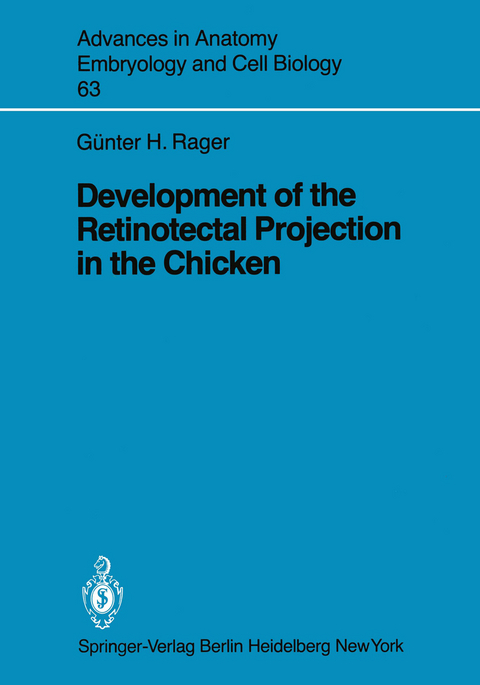
Development of the Retinotectal Projection in the Chicken
Springer Berlin (Verlag)
978-3-540-10121-5 (ISBN)
1 Introduction.- 2 Material and Methods.- 2.1 Experimental Animal.- 2.2 Morphology.- 2.3 Physiology.- 3 Topogenesis and Morphogenesis.- 3.1 Ganglion Cell Perikarya.- 3.2 Ganglion Cell Dendrites.- 3.3 Ganglion Cell Axons.- 3.4 Synaptogenesis in the Optic Tectum.- 4 Physiogenesis.- 4.1 Development of Fibre Activity.- 4.2 Physiology of Synaptogenesis.- 4.3 Structural and Functional Development.- 5 The Formation of the Retinotopic Map.- 5.1 Retinotopy and Order.- 5.2 The Chemoaffinity Hypothesis.- 5.3 The Organization of Fibres in the Visual Pathway.- 5.4 The Origin of the Retinotopic Map.- 5.5 An Alternative View.- 6 The Final Maturation of Retinal Ganglion Cells.- 6.1 Axonal Branching and Formation of Dendrites.- 6.2 Increase of Fibre Diameter as a Function of Axonal Arborization.- 6.3 Competition and Degeneration.- 7 Summary.- References.
| Erscheint lt. Verlag | 1.10.1980 |
|---|---|
| Reihe/Serie | Advances in Anatomy, Embryology and Cell Biology |
| Zusatzinfo | VII, 92 p. |
| Verlagsort | Berlin |
| Sprache | englisch |
| Maße | 170 x 244 mm |
| Gewicht | 235 g |
| Themenwelt | Studium ► 1. Studienabschnitt (Vorklinik) ► Anatomie / Neuroanatomie |
| Schlagworte | Biology • Development • Developmental Biology • Embryo • Embryologie • Embryology • Huhn • Netzhaut |
| ISBN-10 | 3-540-10121-7 / 3540101217 |
| ISBN-13 | 978-3-540-10121-5 / 9783540101215 |
| Zustand | Neuware |
| Haben Sie eine Frage zum Produkt? |
aus dem Bereich


